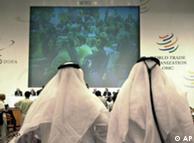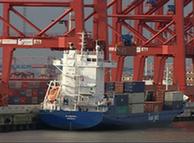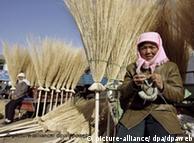TRADE | 26.07.2011
WTO fears for global trade agreements
If the Doha trade round is not to drag into its tenth year of negotiations, something needs to happen - and soon. It's with this sense of urgency that World Trade Organization Director-General Pascal Lamy recently addressed negotiators assembled in a committee specifically set up by the Doha Declaration. And it will be with an even greater sense of urgency that he will address them again this Tuesday.
On Wednesday, it's time for Lamy, as the committee's head, to report on the progress - or lack thereof - to the WTO's General Council.
The Doha round are broad-ranging negotiations designed to liberalize trade among the 153 WTO member countries. They were launched in November 2001 at the WTO ministerial conference in Qatar's capital Doha, aiming to unlock global trade in areas such as agriculture, services and manufacturing, where many barriers to trade still exist.
The Doha declaration made a special commitment to improving the participation of least-developed countries in the multilateral trading system.
Concluding a multilateral agreement under the Doha round would boost world trade considerably, experts say. They predict an impact of $300 to $800 billion (210 - 560 billion euros).
Doha trade talks stalled since 2008
But negotiations have been effectively suspended since the summer of 2008. Then, as so often in the history of world trade negotiations, agriculture has proved a sticking point. The US on one side and India and China on the other could not agree on the extent to which developing countries should be allowed to protect their farmers from surges in imports.
The US - and to some extent the European Union - demanded access to the developing nations agricultural markets in return for cutting their own support for farmers.
While no one has dared pronounce Doha dead, agriculture has remained not the only divisive issue in the past years. Market access for industrial products - also known under the term non-agricultural market access or NAMA - also proved contentious.
The conflict over this issue again pits the US against emerging economies such as India and China, with the US insisting that China commit to opening various sectors of industry to competition by cutting tariffs, and China refusing to even discuss the cutting of sectoral tariffs if not joined by India and Brazil.
Trying to resolve the quandary
Realizing that it may take years for the leading trading partners to overcome their divisions, Lamy has in the meantime proposed focussing on a premliminary deal that would grant concessions to least-developed nations.
This deal, Lamy explained to negotiators on June 22, "could include issues such as trade facilitation, export competition, a step forward on fisheries subsidies and a step forward on environmental goods and services."
But negotiators appears to be divided on what issues should be included in such a "mini-Doha."
Preferential trade agreements
With progress on a multilateral trade agreement stalled, member countries have increasingly taken to entering bilateral or regional trade agreements, also known as "preferential trade agreements" or PTAs.
In its World Trade Report issued last week, the WTO said there were almost 300 such PTAs in force in 2010. It added that many of these agreements went beyond tariffs to include regulations on services and investments, intellectual property protection, and competition policy.
While admitting that these kind of agreements might address a need, global production networks may have far better regulation and supervision in a variety of areas, Lamy also said that burgeoning PTAs raised "vital questions about the focus and the reach of the WTO, and the value assigned by governments to globally-based trade relations."
But by the time the ministerial meeting comes round in December, not only Pascal Lamy will know what value governments really do assign to global trade relations and agreements.
Author: Andrea Rönsberg
Editor: Ben Knight
Editor: Ben Knight
dw





No comments:
Post a Comment